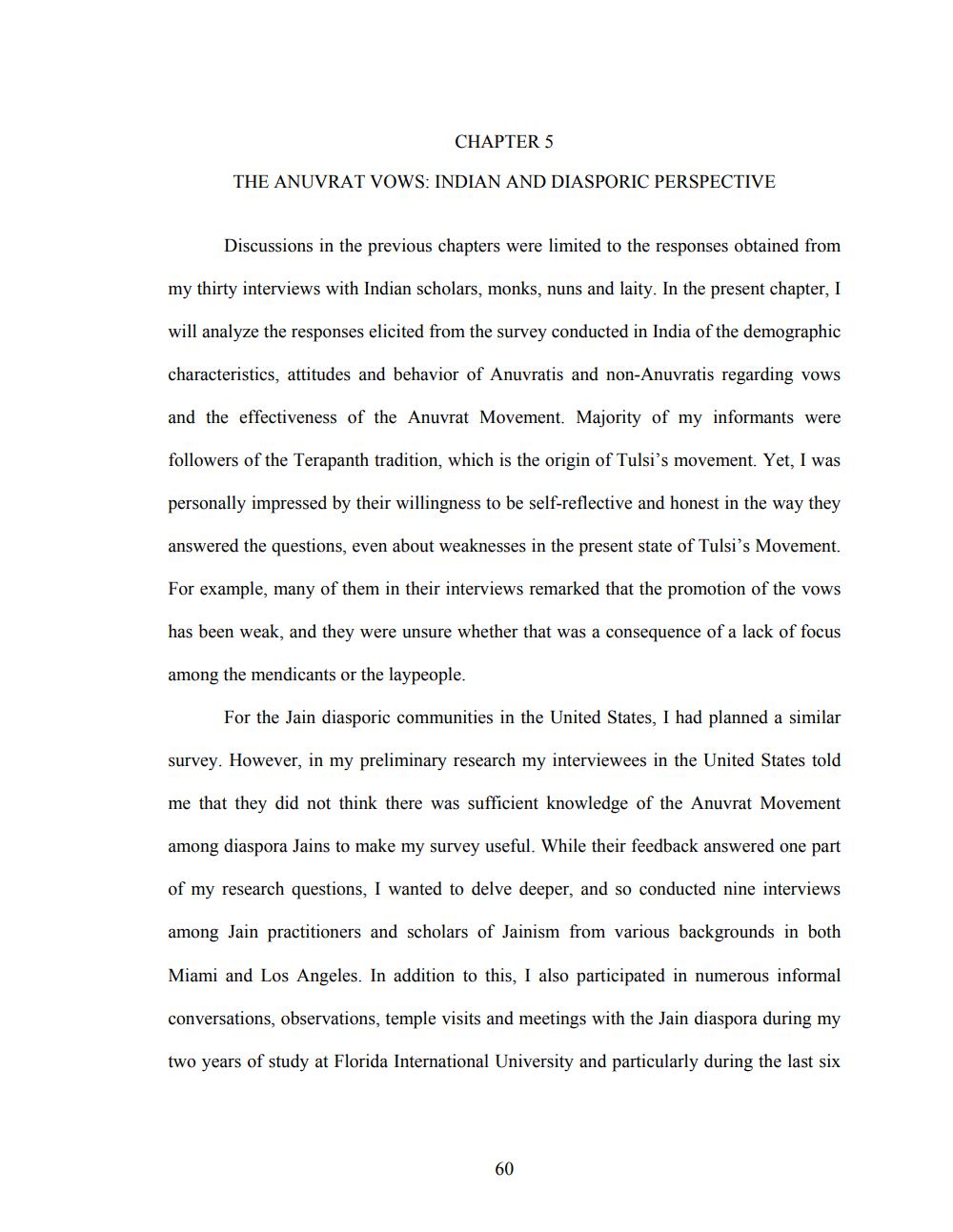________________
CHAPTER 5
THE ANUVRAT VOWS: INDIAN AND DIASPORIC PERSPECTIVE
Discussions in the previous chapters were limited to the responses obtained from
my thirty interviews with Indian scholars, monks, nuns and laity. In the present chapter, I
will analyze the responses elicited from the survey conducted in India of the demographic
characteristics, attitudes and behavior of Anuvratis and non-Anuvratis regarding vows
and the effectiveness of the Anuvrat Movement. Majority of my informants were
followers of the Terapanth tradition, which is the origin of Tulsi's movement. Yet, I was
personally impressed by their willingness to be self-reflective and honest in the way they
answered the questions, even about weaknesses in the present state of Tulsi's Movement.
For example, many of them in their interviews remarked that the promotion of the vows
has been weak, and they were unsure whether that was a consequence of a lack of focus
among the mendicants or the laypeople.
For the Jain diasporic communities in the United States, I had planned a similar
survey. However, in my preliminary research my interviewees in the United States told
me that they did not think there was sufficient knowledge of the Anuvrat Movement
among diaspora Jains to make my survey useful. While their feedback answered one part
of my research questions, I wanted to delve deeper, and so conducted nine interviews
among Jain practitioners and scholars of Jainism from various backgrounds in both
Miami and Los Angeles. In addition to this, I also participated in numerous informal
conversations, observations, temple visits and meetings with the Jain diaspora during my two years of study at Florida International University and particularly during the last six
60




